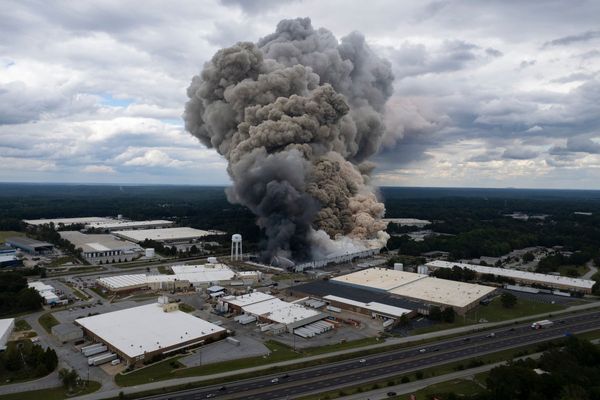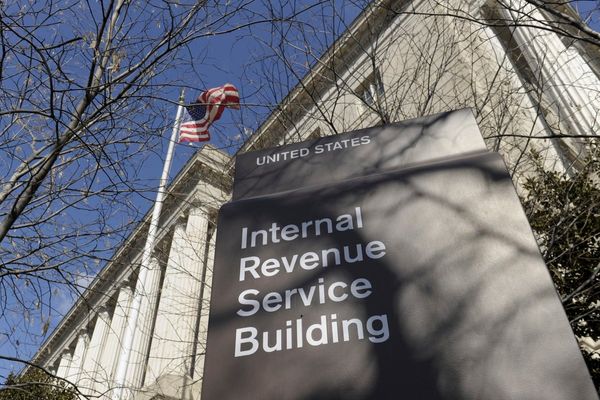
Ukraine carried out “stabilisation measures” near Kherson on Saturday after the city was retaken by Ukrainian forces, as people across the country awoke after a night of jubilation.
Hundreds of citizens flooded the city streets on Saturday morning after an eight-month occupation, embracing Ukrainian soldiers and foreign journalists after what has been described as a “historic day” for Kyiv – and perhaps the most important strategic breakthrough since the beginning of the Russian invasion.
However, the Ukrainian president, Volodymyr Zelenskiy, cautioned that while special military units had reached Kherson city, a full deployment to reinforce the advance troops was still under way – a reminder that about 70% of the Kherson region remains under Russian control.
“We are winning battles on the ground, but the war continues,” said the Ukrainian foreign minister, Dmytro Kuleba, from Cambodia, where he was attending a meeting of the Association of Southeast Asian Nations.
For Russia, the liberation of Kherson marked the latest, and most serious, of a string of battlefield defeats. Images of Russian infantry scrambling to escape over the Dnipro River using a soon-to-be-destroyed pontoon in the morning mist have been widely circulated, and Russia’s defence ministry said it had withdrawn about 30,000 troops.
The retreat came six weeks after the Russian president, Vladimir Putin, had announced the annexation of Kherson and three other regions at a high-profile ceremony in Moscow.
The Kremlin announced on Saturday that it was shifting the “capital” of Kherson’s pro-Russian regional government to Henichesk, a sleepy seaside port city on the Sea of Azov. In spring, Moscow erected a statue of Lenin on a plinth outside the municipal town hall, while in the meantime, in Kherson, people are already removing Russian symbols and any traces of the occupiers’ stay from the streets and buildings.
In the space of 24 hours, groups of locals repainted the city’s imposing concrete city signs in blue and yellow. Others chanted slogans outside the main administration building. They included “Putin is a prick” – a popular refrain which originated with football supporters in Kharkiv – and ZSU, the initials of Ukraine’s armed forces.
With the revelry over, the residents of Kherson know that the solemn task of the city’s reconstruction must now begin. The Russians destroyed power plants, and the city lacks water and heating. Some have already started gathering wood in preparation for a cold and bleak winter. The city has no internet and only a limited mobile connection. On Saturday, a wifi hotspot was set up next to the main bus station using a satellite dish, with passersby able to log on.
The roads leading to the city are in poor condition and the journey difficult. The retreating Russian army has blown up all major infrastructure in Kherson province including the bridge over the Kakhovka hydroelectric dam. There are now no fixed crossing points between the liberated right bank and the occupied left, including the city of Nova Kakhovka. Due to torrential rains, mud has begun to invade the few roads leading to Kherson.
The chief of Ukraine’s national police force, Ihor Klymenko, said in a Facebook post on Saturday that 200 officers had returned to the city of Kherson, while the Ukrainian military was overseeing “stabilisation measures” in areas around the city to make sure it was safe and livable.
Zelenskiy said the first part of the stabilisation work includes de-mining operations. He said the entry of “our defenders” into Kherson would be followed by police, sappers, rescuers and energy workers, among others.
“Medicine, communications, social services are returning,” he said. “Life is returning.”
The Russian military was scrambling to move its vulnerable assets away from the new frontline across the Dnipro River. Ukraine’s army is now able to target Russian weapon dumps and logistics hubs in the far south of Kherson province, towards the Crimean peninsula.
Telegram channels reported that the Russian air force was transferring its helicopters from an airfield in the town of Chaplynka, where they had been based for eight months, to safer locations. US-supplied high-precision Himars artillery systems have a range of about 90km – and Chaplynka is within range for the first time.
Since the summer, Ukraine has used the long-range system to devastating effect, destroying Kherson’s Antonivskyi Bridge during Russia’s occupation, and choking supply routes. Yuriy Ignat, spokesperson for Ukraine’s air force command, warned Kherson residents on Saturday that they could come under attack from Russian artillery and airstrikes.
Russia could unleash all types of weapons in multiple directions, he said, adding that air raid warning sirens would be broadcast from loudspeakers. Basic services were being restored, meanwhile, in parts of the city. The Ukrainian energy company DTEK said some liberated settlements in the wider Kherson region would get power from next week.
It added that Kherson itself will be reconnected to the grid later, possibly within a month.
Then it will be the turn of the Ukrainian prosecutors, who, as happened in the Kyiv and Kharkiv regions, will begin the hard work of investigating the actions of Russian war criminals in the region.
“Every time we liberate a piece of our territory, when we enter a city liberated from Russian army, we find torture rooms and mass graves with civilians tortured and murdered by Russian army in the course of the occupation of these territories,” he said.
When asked about the chance of talks with Moscow, Kuleba said: “It’s not easy to speak with people like this. But I said that every war ends with diplomacy and Russia has to approach talks in good faith.”
AP, AFP and Reuters have contributed to this report.







